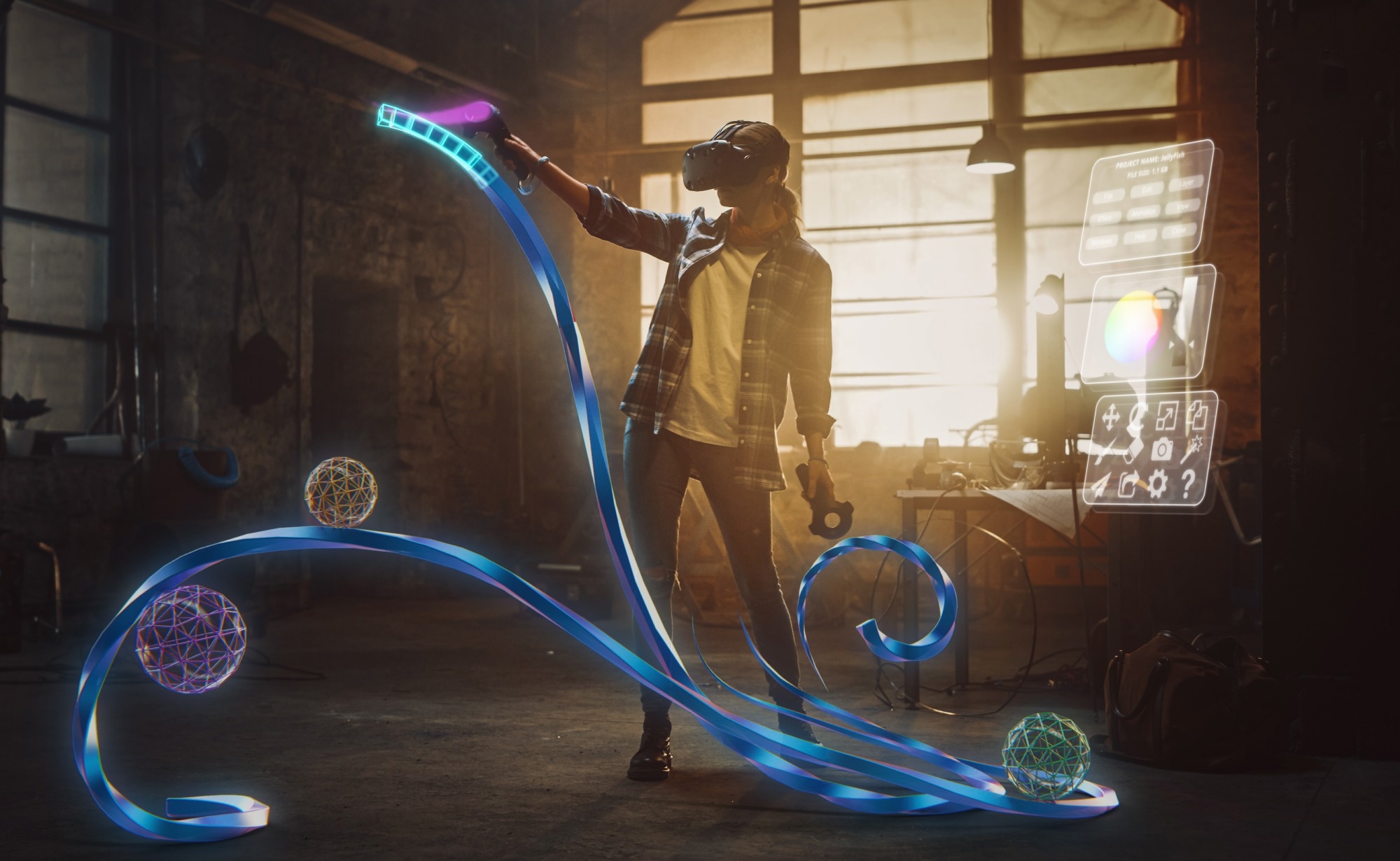In an article published in the journal Nature, researchers explored the impact of required depth movement on three-dimensional (3D) tracking performance in manual tasks, examining binocular and monocular visions. They aimed to uncover how depth information influences tracking behaviors, especially in a virtual reality (VR) environment, providing insights for designing effective motor skill training programs.
 Study: Unraveling the Influence of Depth Movements on 3D Tracking Performance in Virtual Reality. Image credit: Gorodenkoff/Shutterstock
Study: Unraveling the Influence of Depth Movements on 3D Tracking Performance in Virtual Reality. Image credit: Gorodenkoff/Shutterstock
Background
Manual tracking movements involve feedback and feedforward control, with factors like age, disorders, target acceleration, and speed influencing reliance on these mechanisms. Unlike ballistic arm movements, manual tracking tasks require the perpetual processing of spatial information, often examined in two-dimensional (2D) space. However, understanding the role of depth information in 3D tracking remains limited.
Depth perception involves intricate brain computation, primarily under binocular vision, utilizing binocular disparity and fusion. Models explaining depth perception under monocular vision also exist. Despite the relevance of depth information, its contribution to 3D tracking performance is unclear, especially in a VR setting. Previous studies focused on lateral axis errors but overlooked depth information's role.
This study introduced a planar tracking task across three planes with different depth requirements: a fronto-parallel plane(ROT 0), a sagittal plane(ROT 90), and a plane rotated by 45°(ROT 45). The tasks engaged two independent axes in the eye-centered coordinate system or 3D information processing. With experiments conducted under binocular and monocular visions, the research aimed to discern how required depth movement influences tracking performance. The distinction between these vision environments is crucial, given their involvement in-depth information processing within the brain. The researchers addressed a gap in knowledge regarding the comprehensive effect of depth information on behavioral performance during visually guided tracking movements in 3D space.
Methods
Fifteen male participants, aged 20.1 on average, engaged in a visually guided tracking task within a 3D VR space using HTC VIVE(HTC Corporation, Taipei, Taiwan). The VR setup included a head-mounted display (HMD), and participants controlled a tracer via a hand-held controller. Three tasks with distinct depth planes (ROT 0, ROT 45, ROT 90) were performed under binocular and monocular visions. The tasks involved circular movements in various planes, necessitating lateral, vertical, and depth movements. Before each trial, a calibration session individualized the initial target position for participants. Data on target and tracer positions were recorded at 90 Hz.
Participants tracked a moving target at a constant speed (0.5 Hz) for three circles per trial. The experiment encompassed two vision conditions: binocular (unobstructed vision) and monocular (one eye obstructed). Each participant conducted 12 trials, including practice trials for each vision condition.
Position errors in 3D space and absolute errors on each axis (X, Y, Z) were calculated and averaged over performance time. One-way repeated measures Analysis of Variance (ANOVA), considering three plane levels (ROT 0, ROT 45, ROT 90), assessed the impact on errors. Greenhouse–Geisser correction was applied if Mauchly's test indicated non-sphericity. Post-hoc tests with Bonferroni correction determined significant differences.
The methodology ensured a comprehensive examination of tracking performance under different depth conditions, considering both binocular and monocular visions. The choice of tasks and analysis methods allowed for a nuanced understanding of how depth movements influence motor control mechanisms in 3D tracking tasks.
Results
- Binocular Vision:
In the binocular vision condition, tracking performance varied across tasks. ROT 90 exhibited significantly larger errors in 3D compared to ROT 0 and ROT 45. Analysis of individual axes revealed significant differences in lateral and depth errors among tasks. ROT 90 had the highest depth error, while ROT 0 showed the least. However, no significant differences were observed on the vertical axis. These findings suggest depth movements significantly influenced 3D tracking, especially in ROT 90.
The significant impact of depth movements on 3D tracking, particularly in ROT 90, aligned with expectations. Larger errors in depth suggest a complex processing demand when concurrently managing lateral and vertical movements. The differentiated error patterns on individual axes emphasized the task-specific challenges introduced by depth.
- Monocular Vision:
Under monocular vision, no significant differences were found in 3D errors among ROT 0, ROT 45, and ROT 90 tasks. Examining individual axes, ROT 90 exhibited significantly lower lateral errors compared to ROT 0 and ROT 45. However, no significant differences were detected in errors along the vertical and depth axes among tasks.
Unexpectedly, the absence of significant differences in 3D errors under monocular vision challenged the presumed importance of binocular vision for depth perception in tracking tasks. While ROT 90 showed improved lateral tracking, the lack of depth-related differences contradicted established notions. This raised questions about the adaptability of the motor control system in monocular vision scenarios, suggesting potential compensatory mechanisms.
Conclusion
In conclusion, this study unveiled nuanced aspects of tracking performance in 3D VR space under varying depth requirements and vision conditions. Binocular vision showcased superior performance, independently processing depth information on each axis. Tasks demanding greater depth movement resulted in non-linear variations in tracking errors.
Monocular vision, however, exhibited an unpredictable performance, emphasizing the complexity of depth processing. The findings hinted at intricate neural mechanisms influencing tracking behavior. As future research could explore neural correlation and additional factors like feedback control, this research contributed valuable insights into the interplay of vision, depth, and motor control in immersive environments.
Journal reference:
- Kim, H., Koike, Y., Choi, W., & Lee, J. (2023). The effect of different depth planes during a manual tracking task in three-dimensional virtual reality space. Scientific Reports, 13(1), 21499. https://doi.org/10.1038/s41598-023-48869-w, https://www.nature.com/articles/s41598-023-48869-w